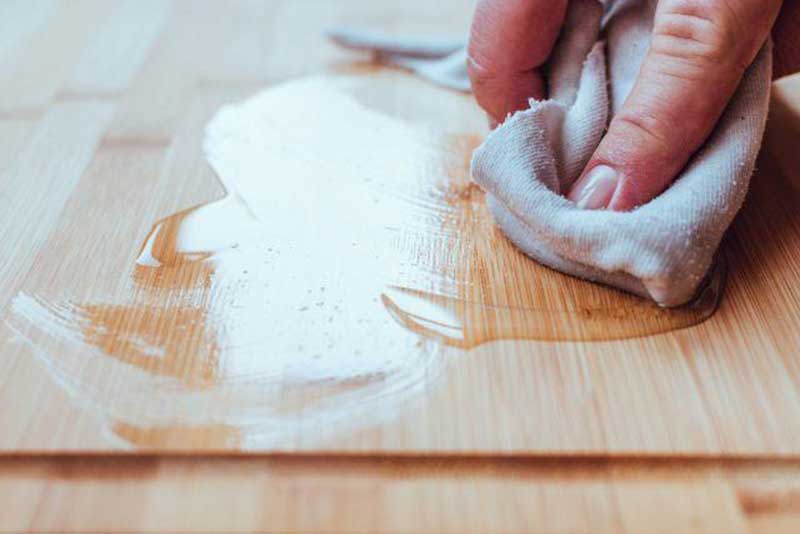Have you ever found yourself dealing with an oil stain on your favorite clothing or a grease spot on your brand-new carpet? Oil stains can be quite stubborn and challenging to remove, but fret not! In this article, themanestreet will explore effective methods to tackle those pesky oil stains and restore your belongings to their former glory. From common household ingredients to specialized cleaning products, we’ll cover a range of techniques to help you bid farewell to those unwanted oil stains.
Introduction
Oil stains are notorious for leaving unsightly marks on various surfaces, but with the right approach, you can effectively remove them. Whether you’re dealing with oil stains on clothing, upholstery, carpets, or hard surfaces, there are methods available to help you tackle the problem head-on.
Pre-treating Oil Stains
Before diving into specific techniques, it’s essential to pre-treat oil stains to enhance the effectiveness of the removal process. Here are a few preliminary steps to follow:
Identifying the Fabric
Different fabrics require different treatment methods. Check the care label on the garment or consult a professional cleaner to determine the best approach.
Blotting the Stain
When dealing with fresh oil stains, start by blotting the excess oil gently with a clean cloth or paper towel. Avoid rubbing the stain, as it may spread and penetrate deeper into the fabric or surface.
Applying Talcum Powder or Cornstarch
Cover the oil stain with talcum powder or cornstarch to absorb as much oil as possible. Let it sit for about 15 minutes, then brush off the powder.
Using Dishwashing Liquid
For stubborn stains, apply a small amount of dishwashing liquid directly to the stain. Gently rub the liquid into the fabric or surface before rinsing with water.

Removing Oil Stains from Clothing
Clothing often falls victim to oil stains. Here are some effective methods for oil stain removal from various types of fabric:
Applying Rubbing Alcohol
Dampen a clean cloth with rubbing alcohol and gently dab the stained area. Rinse with water and launder as usual.
Utilizing Baking Soda Paste
Create a paste by mixing baking soda with water. Apply the paste to the oil stain, let it sit for a few hours, and then rinse off before laundering.
Employing Dish Soap and Hydrogen Peroxide
Combine dish soap and hydrogen peroxide to form a cleaning solution. Apply it to the stain, let it sit for a few minutes, and then launder as usual.
Trying Shampoo or Hand Sanitizer
Shampoo or hand sanitizer can also be effective in removing oil stains from clothing. Apply a small amount directly to the stain, let it sit, and then launder.

Eliminating Oil Stains from Upholstery and Carpet
Accidental oil spills on upholstery or carpets can be a cause for concern. Here are some methods to help you remove oil stains effectively:
Absorbing the Oil
First, use a clean cloth or paper towel to blot as much of the oil as possible. Avoid pressing too hard, as it may push the oil further into the fabric.
Applying a Dish Soap Solution
Create a solution by mixing dish soap with warm water. Gently apply the solution to the stained area using a clean cloth or sponge, working from the outer edges toward the center.
Using a Commercial Carpet Cleaner
If the oil stain persists, consider using a commercial carpet cleaner designed specifically for oil stain removal. Follow the manufacturer’s instructions for optimal results.
Seeking Professional Help
For particularly stubborn or delicate oil stains, it may be best to seek professional assistance. Professional cleaners have the expertise and specialized tools to tackle challenging stains effectively.
Banishing Oil Stains from Hard Surfaces
Oil stains on hard surfaces like countertops or floors can be unsightly. Here are a few methods to help you get rid of them:
Using a Degreaser
Apply a degreaser directly to the oil stain and let it sit for a few minutes. Scrub the stain gently with a sponge or cloth, then rinse thoroughly.
Employing Baking Soda and Vinegar
Create a paste by mixing baking soda and vinegar. Apply the paste to the oil stain, scrub gently, and then rinse with water.
Trying a Paste of Hydrogen Peroxide and Baking Soda
Combine hydrogen peroxide and baking soda to form a paste. Apply it to the oil stain, let it sit for a while, and then scrub before rinsing thoroughly.
Conclusion
Oil stains can be a frustrating nuisance, but with the right techniques, you can effectively remove them from various surfaces. Remember to identify the fabric or surface, pre-treat the stain, and use appropriate cleaning methods for optimal results. Whether it’s clothing, upholstery, carpets, or hard surfaces, the methods mentioned in this article can help you bid farewell to oil stains and restore your belongings to their former glory.
Frequently Asked Questions (FAQs)
Can I use regular soap instead of dishwashing liquid for removing oil stains?
Yes, you can use regular soap instead of dishwashing liquid. Both are effective in breaking down oil stains.
Is it necessary to consult a professional cleaner for oil stain removal from clothing?
Consulting a professional cleaner is not always necessary. You can try the methods mentioned in this article first. However, for delicate or stubborn stains, professional assistance may be beneficial.
Will applying heat help in removing oil stains from fabrics?
No, applying heat can actually set the stain and make it more challenging to remove. It’s best to avoid heat until the oil stain has been completely eliminated.
Can I use bleach to remove oil stains from colored fabrics?
Bleach is not recommended for removing oil stains from colored fabrics, as it may cause discoloration or damage the fabric. Stick to the methods mentioned in this article for safe andeffective oil stain removal.
What should I do if the oil stain doesn’t completely come off after trying these methods?
If the oil stain persists even after attempting the suggested methods, it’s best to consult a professional cleaner. They have the expertise and specialized equipment to deal with stubborn stains effectively.











